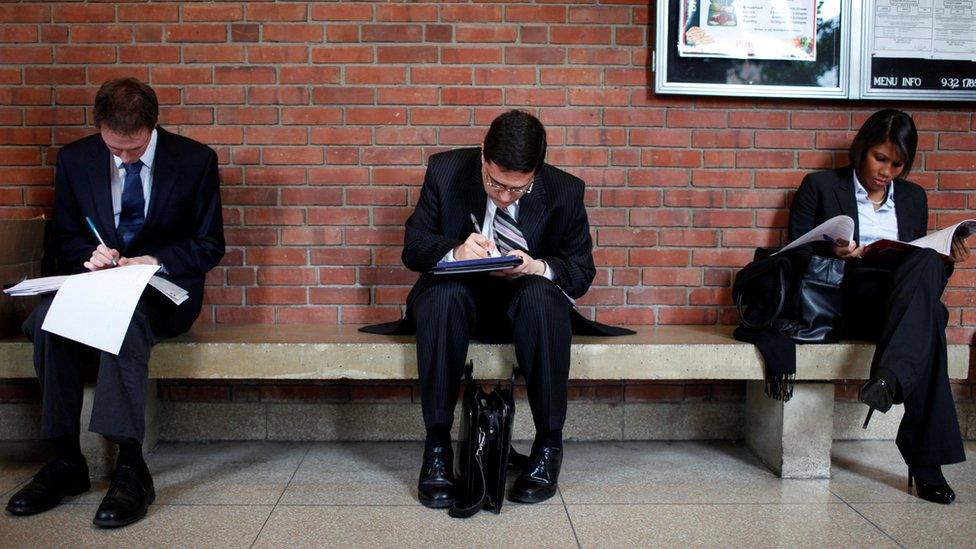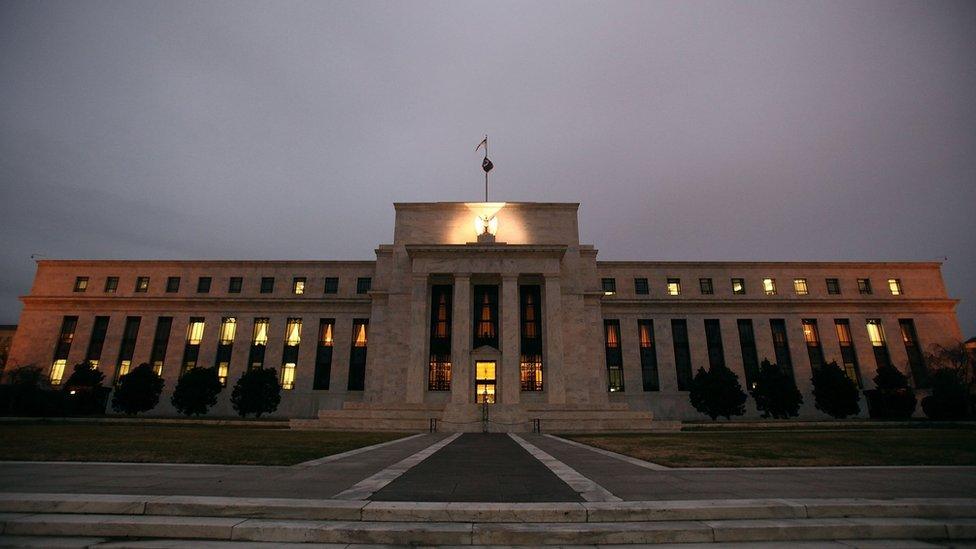US job creation rebounds strongly in June
- Published

The US economy created 287,000 jobs in June, rebounding strongly from disappointing growth in May.
The figure was much stronger than forecast, and the dollar and yields on US government bonds rose in the belief a US rate rise was now more likely.
The Labor Department revised down May's already weak first estimate of 38,000 jobs to just 11,000.
The unemployment rate, which is derived from a different data set, rose to 4.9% in June from 4.7% the month before.
The change in the jobless rate reflected a rise in the number of people registering that they were looking for work, generally regarded as a sign of confidence in the economy.
'Sigh of relief'
The growth in jobs was seen across a variety of sectors. Manufacturing employment - which had dropped by 16,000 in May - rose by 14,000, there were 29,900 more jobs in the retail sector, and the leisure and hospitality sectors gained 59,000 jobs.

May's weak jobs figure had been depressed by a strike by 35,000 Verizon workers. Their return to work helped to boost information technology employment by 44,000.
The Labor Department figures indicated that wage growth remained tepid, rising by just 0.1% in June from the month before. However, earnings were 2.6% higher compared with June last year, up from a rate of 2.5% in May.
Market watchers welcomed the stronger-than-expected jobs figures.
"It has been a month of huge shocks for the global economy, but what you can hear now is a massive sigh of relief from the markets. The disastrous May non-farm payroll reading followed by Brexit were very painful, yet there is now a glimmer of light at the end of the tunnel," said Dennis de Jong, managing director of UFX.com.
"Although the Federal Reserve will take encouragement from this vital data, they simply aren't in a position to consider a rate hike at the moment. There is still huge uncertainty around the world, but the US economy has at least taken a step in the right direction here."
May's 'blip'
Earlier this year there had been speculation that the Fed could raise interest rates as soon as July. However, May's disappointing jobs report and the uncertainty following the UK's vote to leave the EU appeared to have pushed any rate rise well into the future.
Andrew Hunter, assistant economist at Capital Economist, said the latest jobs figures could bring forward the time when the Fed might act.
"The surge... suggests that the sharp slowdown in the preceding months was nothing more than a blip," he said.
"Fed officials will want to see evidence of a more sustained recovery in employment growth over July and August as well, but this nonetheless supports our view that the next hike could still be in September."
- Published7 July 2016

- Published6 July 2016
